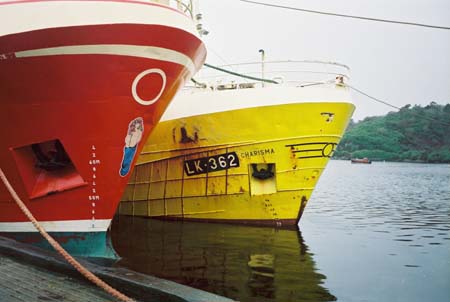 The oceans and seas that bathe Europe offer new prospects for growth and employment to meet the objectives of the Europe 2020 strategy, but to fully exploit this potential, it is necessary to know more about the seabed.
The oceans and seas that bathe Europe offer new prospects for growth and employment to meet the objectives of the Europe 2020 strategy, but to fully exploit this potential, it is necessary to know more about the seabed.
For this reason, the European Commission proposes to create a digital map of the European seabed by 2020, by collecting all existing data in a single and coherent database, accessible to all.
In the Green Paper on 'Knowledge of the Marine Environment' adopted today, the Commission launches a consultation on how to achieve this goal. The Green Paper raises a number of questions, including: "how to integrate the efforts currently being made in the Member States into a common EU effort?", "how to develop new, less costly observation technologies?" and "what might the private sector's contribution be?" THE consultation is open until next December 15th.
The new continuous multi-resolution digital map of the European seafloor must have the highest possible resolution and cover topography, geology, habitats and ecosystems.
In addition, it should provide access to up-to-date information and observations on the physical, chemical and biological state of the water column, related data on the impact of human activities and oceanographic forecasts.
All this data must be easily accessible, interoperable and free from restrictions on use. The system must be powered by a sustainable process that progressively improves its suitability for the intended purpose and helps Member States to maximize the potential of marine observation, sampling and survey programmes.
Maria Damanaki, Member of the Commission responsible for Maritime Affairs and Fisheries, said: “The European economy would benefit from a more structured approach to knowledge of the marine environment. Such an approach could increase the competitiveness of those working at sea and on the coast by €300 million a year and generate new opportunities worth an additional €200 million a year. Benefits from lower levels of uncertainty are more difficult to calculate, but we estimate that reducing the uncertainties related to sea level rise by 25% per year would provide those responsible for protecting Europe's coastline with additional savings of 100 million dollars. euros per year. A first set of pilot projects demonstrated that this approach is feasible. The lessons learned from these projects will form the foundation of our actions.”
In addition to providing motivating, rewarding jobs in line with young people's expectations, Europe's oceans and seas can provide the clean energy we need to avert a climate catastrophe, provide a source of protein for healthy diets, enable obtain pharmaceutical products or enzymes from organisms that live in the most extreme conditions of temperature, darkness and pressure, and also make it possible to meet the growing demand for raw materials from the mining of the seabed.
These new 'blue' growth and employment opportunities are driven by two aspects. First, the scarcity of available land and fresh water encourages humanity to turn again to the resources found in the salt waters that cover 71% of the planet.
Second, we can take advantage of the rapid advances made in underwater observation, remote manipulation and construction technology – mainly developed by the oil industry – to favor other nascent industries under a wide variety of oceanographic and meteorological conditions.
To realize this potential, it is necessary to facilitate all possible investments. We must lower costs, reduce risks and encourage innovation, and we must ensure that this expansion of the blue economy takes place in a sustainable way. The resources are vast but not infinite. Therefore, we need to know the state of the sea and its future evolution and we must understand the impact of climate change on the oceans and vice versa.
Currently, the data is held by hundreds of institutions in Europe. Thus, it is difficult to find data on a particular parameter in a particular domain, it is complicated to obtain authorization to use them, and it is time-consuming to gather data from different and mutually incompatible sources into a coherent picture. This situation increases the costs for those operating at sea and prevents the start-up of a large number of potential activities.
The Commission intends to work with Member States in order to pool the resources and mechanisms available in order to make this knowledge available to industry, public authorities, researchers and society.
Knowledge of the Marine Environment 2020
The Commission Communication entitled 'Marine Knowledge 2020' of September 2010 showed that better management of marine data and observations would lower the cost of operations at sea, stimulate innovation and reduce uncertainty about the future. marine evolution.
A first set of preparatory actions, within the framework of the European Union's integrated maritime policy, made it possible to create prototype data platforms that give access to data on the marine environment held by European public bodies. Six thematic groups – hydrography, geology, physics, chemistry, biology and physical habitats – brought together a network of 53 organizations.
At the same time, a maritime service was created under the European Earth Monitoring Program (GMES) using in situ and satellite data to provide oceanographic forecasts, and the European Union Data Collection Framework created a process for a structured collection of data on fisheries. Member States, for their part, are also active in this field.
More information:
Learn More here the site «Knowledge of the Marine Environment»:
Link to the consultation:
http://ec.europa.eu/dgs/maritimeaffairs_fisheries/consultations/marine-knowledge-2020/index_en.htm


















Comments